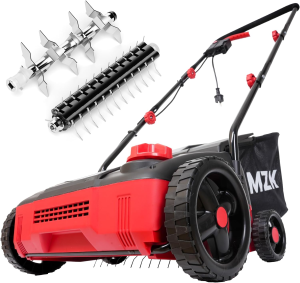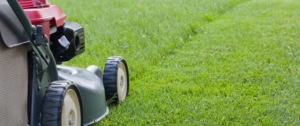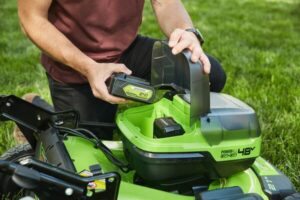Pruning roses is a fundamental aspect of rose care that directly impacts their health, vigor, and beauty. In this guide, we’ll delve into the art of pruning roses, exploring essential techniques to help you achieve optimal growth and abundant blooms.

Understanding the Importance of Pruning Roses
Pruning is vital for maintaining the health and vitality of roses. It promotes air circulation, reduces disease susceptibility, and stimulates new growth and flowering. By pruning roses correctly, you can shape their growth, encourage robust blooms, and prolong their lifespan.
How to prune roses?
To do this we should prepare something as below
When to Prune Roses
Pruning roses is a delicate art, and timing is key to ensure optimal results. Here’s a detailed guide on when to prune roses throughout the year:
Late Winter or Early Spring
The prime time for major pruning of roses is in late winter or early spring, just as new growth begins to emerge. This typically falls between January and May, depending on your climate zone.
Regional Estimates: For specific timing, consider the following estimates based on climate zones:
- Zones 3 and 4: May
- Zones 5, 6, and 7: March or April
- Zone 8: February or March
- Zone 9: January or February
- Zone 10: January
Spring
In early spring, after the last frost in colder regions, it’s time for major pruning. Look for signs of buds or new leaves emerging on the rose bushes as an indicator that it’s time to start pruning. Following the 8 Basic Pruning Steps outlined below can help guide your pruning efforts effectively.
Summer
During the summer months, you can continue to maintain your rose bushes by deadheading spent flowers. Removing dead flowers encourages the plant to produce more blooms and helps maintain an attractive appearance. This can be done throughout the flowering season to promote continuous blooming.
Fall
As fall approaches and the first killing frost looms, it’s time to prepare your rose bushes for winter. Trim longer stems to prevent them from snapping in winter storms and prune back any crossing branches that could potentially rub together and cause damage. However, it’s important not to prune too aggressively in the fall, as excessive pruning can stimulate new growth that may be vulnerable to freezing temperatures.
Additionally, remove any dead or diseased branches and foliage, and clean your pruning tools thoroughly to prevent the spread of disease to other plants.
By adhering to these seasonal guidelines for pruning roses, you can ensure healthy growth, abundant blooms, and long-lasting beauty in your garden throughout the year.
8 Basic Pruning Steps, ensuring your roses thrive
Discover the streamlined approach to pruning modern roses with these comprehensive 8 Basic Pruning Steps, ensuring your roses thrive:

- Strip Away Remaining Leaves: Begin by clearing the rose bush of any lingering leaves. This step unveils the bush’s structure, revealing all its canes or stems. Additionally, it eliminates any pests or diseases that may have taken refuge in the foliage during the winter.
- Address Dead Wood: Identify dead wood by its brown coloration and confirm its status by cutting into it—brown indicates dead wood, while green signifies living tissue. Remove any dead wood by cutting it back to the base of the plant.
- Create Space in the Center: Enhance airflow and minimize the risk of damage and disease by eliminating crossing branches that could rub against each other. The aim is to achieve upward-reaching branches with an open structure, resembling a vase-like shape.
- Eliminate Thin and Weak Growth: Follow the rule of thumb to remove any growth thinner than a pencil. This practice encourages robust growth and ensures the allocation of resources to healthier canes.
- Precision Pruning: Carefully prune the remaining canes by making cuts 1/4” to 1/2” above an outward-facing bud eye—a small bump where a leaf would meet the stem. This technique encourages new stems to grow outward rather than inward, promoting a balanced shape. Make cuts at a 45-degree angle sloping away from the bud to facilitate water runoff.
- Seal Fresh Cuts: Safeguard freshly pruned canes from rot and pests like rose borers by sealing the wounds with a specialized compound, such as Bonide’s Garden Rich Pruning Sealer.
- Thorough Cleanup: After pruning, ensure the area around the rose bush is clean and tidy. Dispose of all leaves and cut branches to prevent the accumulation of disease and pests. Additionally, maintain hygiene by sterilizing your pruning tools with isopropyl alcohol between plants to prevent the spread of contaminants or disease.
- Provide Essential Nutrition: Roses have hearty appetites and require proper nutrition to thrive. Feed your roses with a long-lasting fertilizer like Jobe’s Organics Fertilizer Spikes, ensuring they receive the nutrients necessary for robust growth and abundant blooms.
By following these meticulous pruning steps, you’ll nurture healthy, vibrant roses that grace your garden with their beauty season after season.
Pruning Techniques for Different Types of Roses
- Hybrid Tea Roses:
Prune hybrid tea roses to maintain an open, vase-like shape. Remove dead or diseased wood, as well as any crossing or inward-growing branches. Cut back healthy stems to an outward-facing bud to encourage outward growth and prevent congestion in the center of the plant.

- Floribunda Roses:
Floribunda roses produce clusters of blooms on long stems. Prune them to maintain a compact, bushy shape. Remove spent blooms regularly to encourage continuous flowering. Additionally, thin out crowded branches to improve air circulation and reduce disease risk.

- Climbing Roses:
Climbing roses require different pruning techniques to promote vigorous growth and abundant blooms. Remove dead or weak stems and prune side shoots to maintain a structured framework. Train long canes horizontally to encourage lateral branching and more blooms.

- Shrub Roses:
Shrub roses are known for their natural, informal growth habit. Prune them lightly to remove dead or diseased wood and maintain shape. Focus on enhancing the plant’s natural form rather than rigid pruning. This approach preserves the shrub’s charm while promoting health and vigor.

Pruning Tips for Success
- Use sharp, clean pruning shears to make clean cuts and minimize damage to the plant.
- Angle cuts away from buds to prevent water from collecting and causing rot.
- Remove suckers (vigorous shoots arising from the base of the plant) promptly to prevent them from diverting energy from the main plant.
- After pruning, apply a balanced fertilizer to provide essential nutrients for new growth and flowering.
Conclusion
Pruning roses is an essential skill that every rose enthusiast should master. By understanding the principles of pruning and applying the appropriate techniques for different types of roses, you can ensure healthy growth, abundant blooms, and lasting beauty in your rose garden. With proper care and attention, your pruned roses will reward you with a spectacular display of color and fragrance season after season. In the other hands, we also know about rose’s sickness to prepare to care of them.





